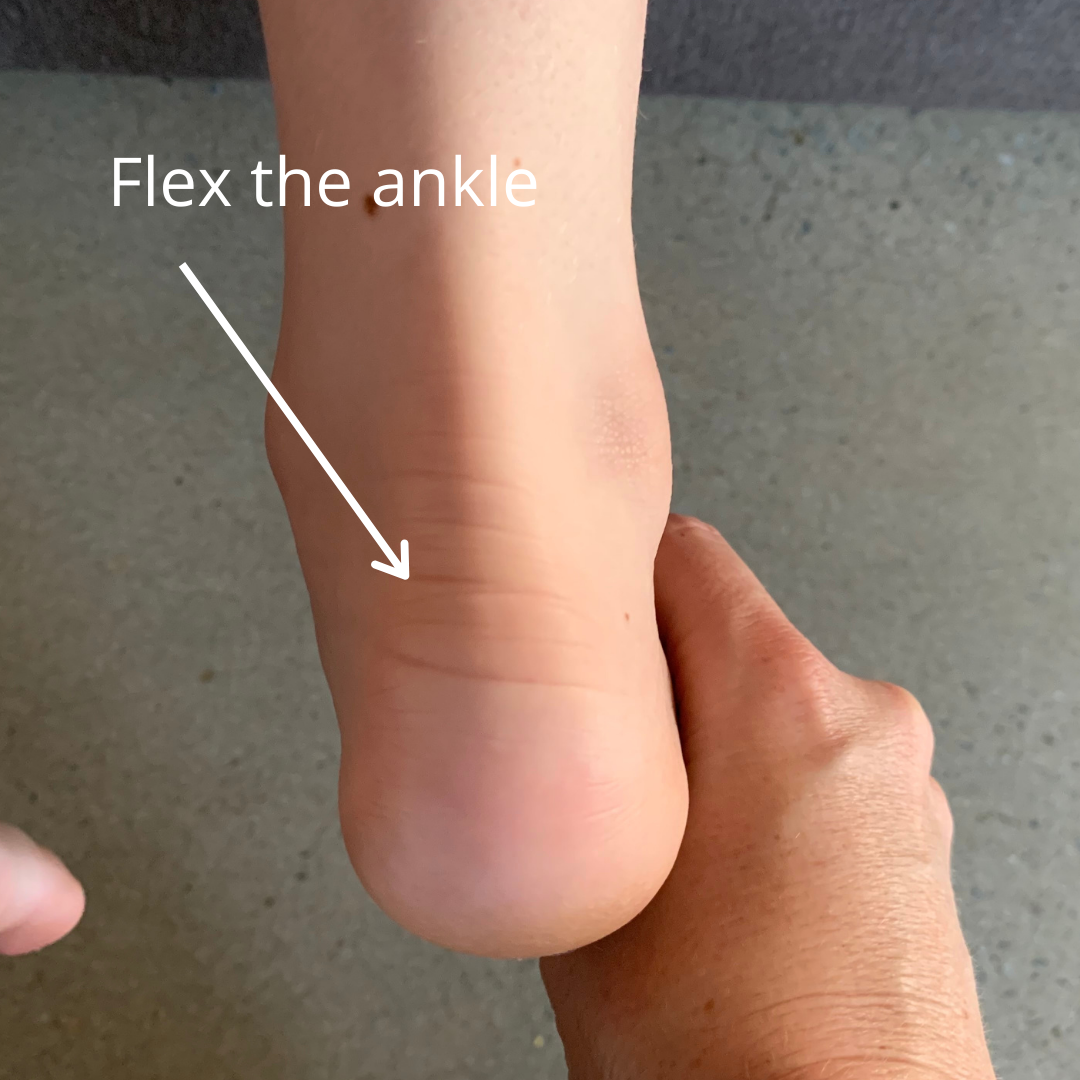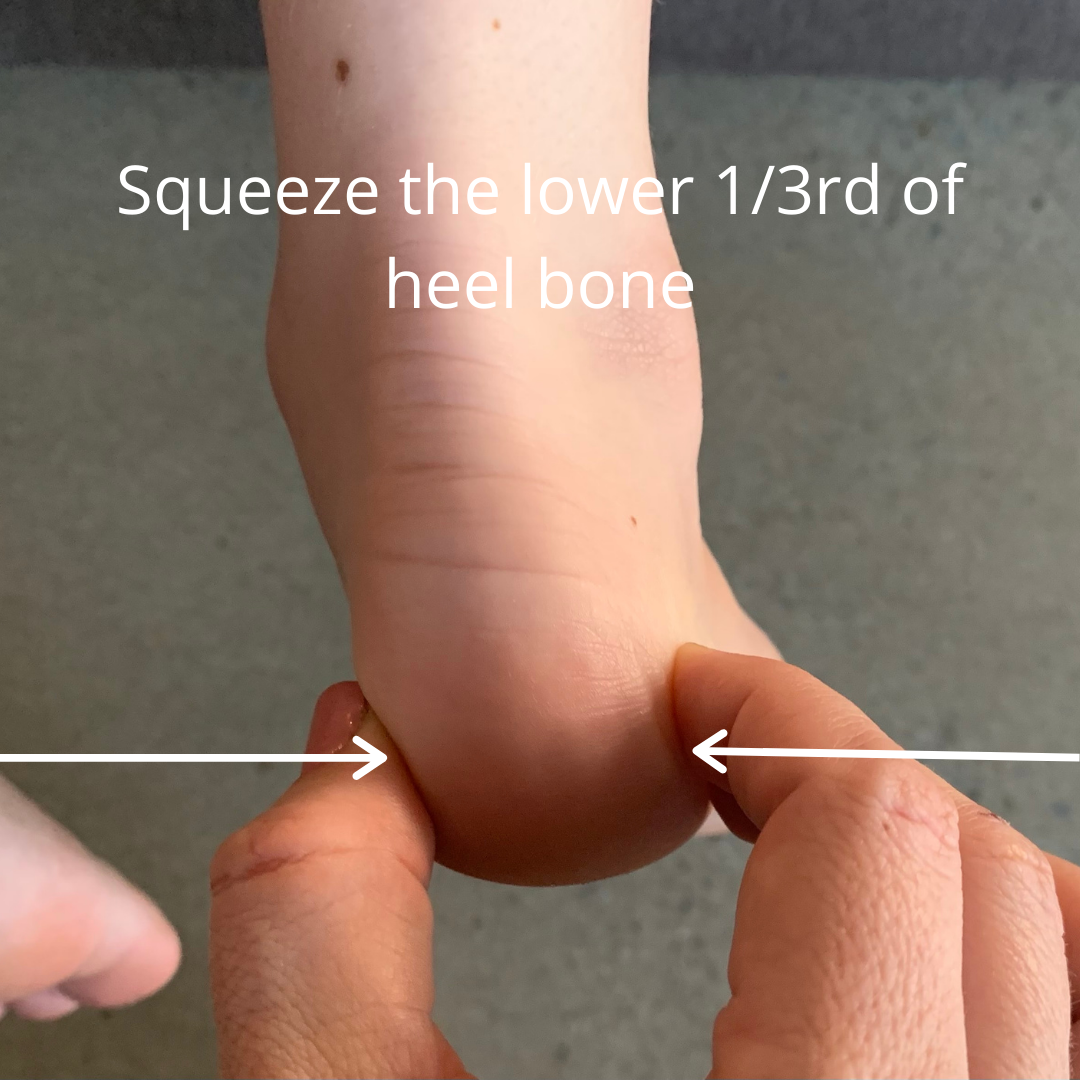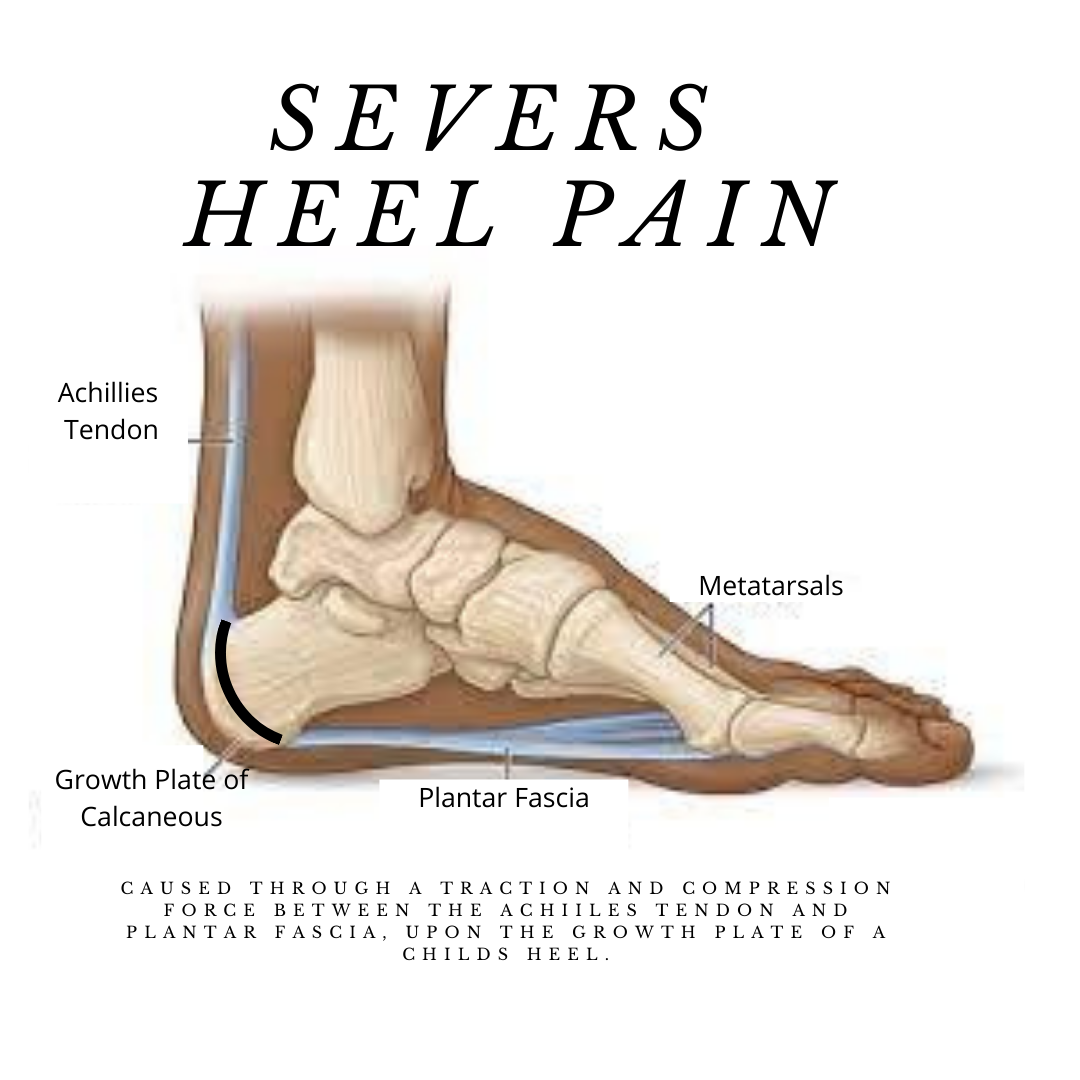Squeeze test Severs Heel Pain
The Squeeze test is a very common technique Medical Professionals use to diagnose Severs heel pain, which is medically referred to as Calcaneal Apophysitis. It’s the major test used to establish whether the growth plate in the child’s heel is sore. When a pain response occurs Severs Heel Pain becomes a more likely diagnosis.
The squeeze test itself is conducted by apply a squeezing pressure from the inside and outside of the heel bone with the fingers and thumb. This is just over where the growth plate in the heel is located. Applying pressure upon the child’s heel from both directions will elicit a pain response in a child with severs heel pain.
The Squeeze test is just one of many tests conducted to help diagnose Severs Heel Pain. Although the test itself tells the us there is pain in the growth plate, the cause of why the Heel pain occurs is not established through this test.
Severs Heel pain in children only occurs between the ages of 7-14 years old. Most commonly in children between 9-12 years. Pain generally aligns itself with an increase in activity and loading movements such as running, jumping, pivoting, skipping. This correlates with our most common sports in Australia requiring these movements eg. AFL, Soccer, Netball, Basketball, Tennis, Hockey and Rugby. We also see a spike in cases as children train more and begin multiple extra curricular sports.
The growth plate of the heel bone has two major soft tissue attachments. At the back of the ankle the Achillies tendon attaches and below the heel is the plantar fascia attachment. These two spring and recoil systems work around the Heel, and therefore a child’s growth plate. Growth plates are more susceptible to being injured by extra load and force because they have not yet formed into strong solid bone.
Most common causes Of Severs Heel pain:
Poor biomechanical movement of the foot an ankle loading the growth plate.
Achilles traction and pulling against the growth plate.
The Heel of a Childs foot with Severs will feel bruised and tender, during and straight after load. This can ease with rest, but often gets worse as jumping, running and propulsive activity restarts. Some children experiencing Severs heel pain avoid touching their heels to the floor and walk on their tip toes when it gets very tender.
With the correct management Severs Heel pain can be treated quite quickly. Usually within a few weeks of commencing treatment there will be a reduction in pain. If it does not subside in this time- imaging may be warranted to rule out other possible heel pain causes.
Orthotics with exercises work really well at relieving heel pain symptoms in children. When you purchase Kidzoles orthotics you will receive access to our membership site and the Heel pain exercise program and pain relief instruction videos. Alternatively, you can just purchase the exercise program without orthotic devices.



